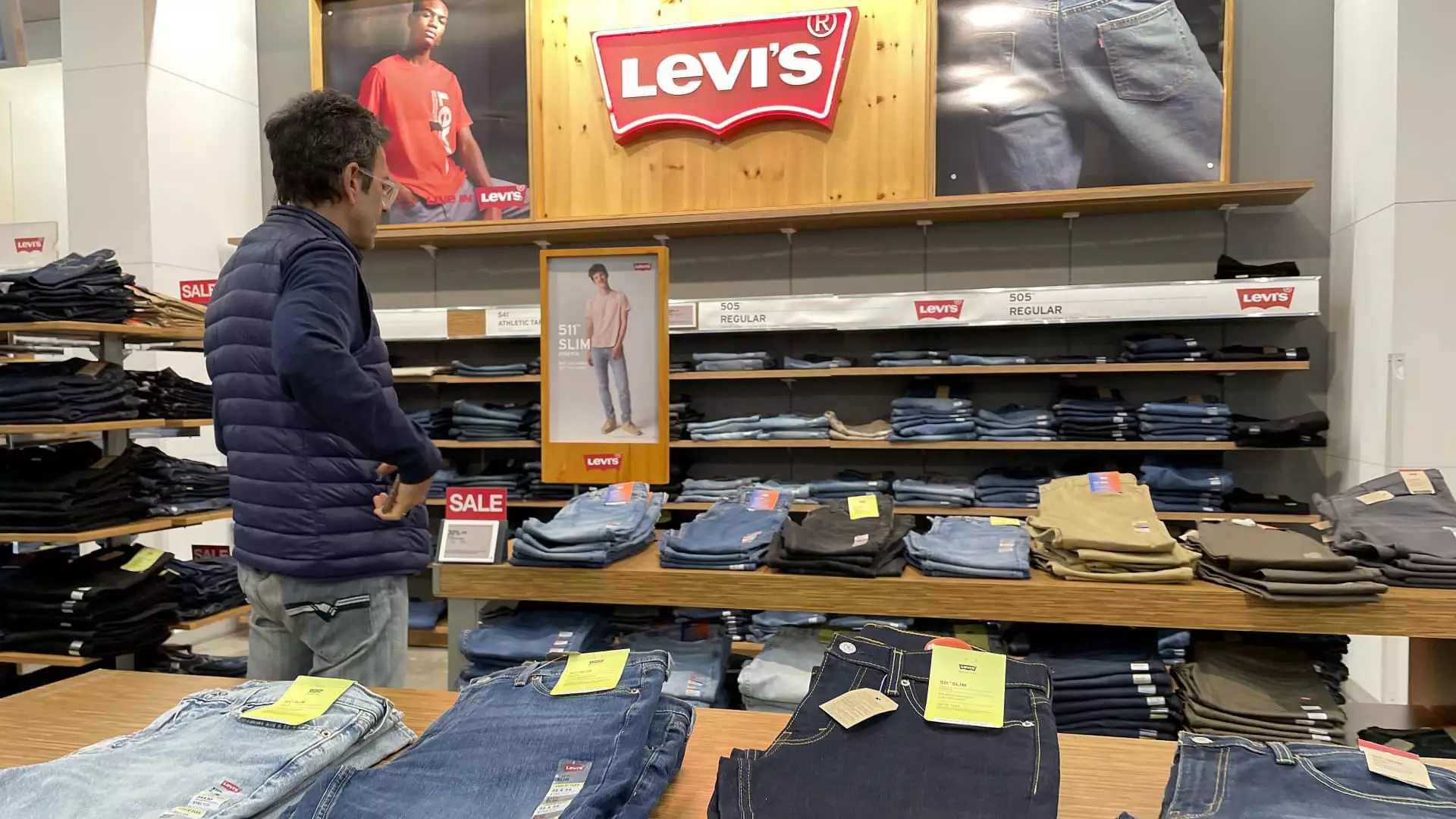Levi Strauss & Co., a cornerstone of the denim industry, finds itself at a crossroads. As consumers increasingly seek stylish jeans, the iconic brand has seen a resurgence in its core offerings. However, the company’s financial health is not solely buoyed by this retro revival; it grapples with internal brand issues, most notably with its Dockers division. The fate of this sub-brand is currently uncertain as Levi’s weighs the possibility of divesting its Dockers label, hoping to streamline operations and enhance profitability.
During the fiscal third quarter, Levi’s brand experienced a commendable 5% increase in sales – the largest jump in two years. This upward movement in denim sales contrasts sharply with the company’s overall revenue, which remained stagnant at $1.52 billion. This figure fell short of Wall Street’s predictions by approximately $30 million, leading to a notable 8% drop in Levi’s stock price during after-hours trading. Analysts had projected earnings per share (EPS) to be slightly higher, but the company managed to beat expectations with an adjusted EPS of 33 cents compared to the anticipated 31 cents.
The figures reveal a complex landscape where the Levi’s brand is thriving while other parts of the business, particularly Dockers, lag behind. For the three months ending August 25, Levi’s net income was $20.7 million, a significant increase from $9.6 million in the same period last year. However, these positive financial indicators are overshadowed by the concerning performance of Dockers, which has struggled to capture consumer interest in recent years.
Levi’s Dockers line, introduced in 1986 as a fashionable khaki alternative, has seen a sharp decline in sales, plummeting by 15% to $73.7 million in the latest quarter. This drop illustrates a larger trend: traditional khakis have fallen out of favor as consumers gravitate towards more versatile lifestyle and activewear options. Despite Levi’s efforts to revamp and distinguish the Dockers brand, the overlap with Levi’s main offerings has led to confusion in consumer identity, further exacerbating the struggles of Dockers.
In light of these challenges, Levi’s finance chief, Harmit Singh, articulated a strategic viewpoint, highlighting that selling off Dockers could potentially strengthen both brands. By allowing Levi’s to concentrate solely on its denim innovation and consumer engagement strategies, the company might reduce revenue volatility and enhance profit margins moving forward. The company has enlisted Bank of America to lead the sales process and pave the way for a potential exit from the Dockers brand.
Despite the struggles with Dockers, Levi Strauss is experiencing a notable shift towards enhancing its direct-to-consumer strategy. This quarter, the company reported a significant 10% increase in direct sales, with e-commerce alone growing by an impressive 16%. By focusing more on direct sales, which currently account for 44% of total revenue, Levi’s aims to increase this figure to 55%. This strategy not only ensures higher profit margins but also fosters a closer relationship with consumers through better data collection and market understanding.
The increase in gross margins, which rose by 4.4 percentage points, can be attributed to reduced cotton costs and a strategic focus on selling high-quality products without extensive markdowns. Levi’s approach marks a shift in retail dynamics, echoing broader industry trends where brands favor direct engagement over traditional wholesale models.
Levi’s marketing initiatives signal a concerted effort to remain relevant in the ever-evolving fashion landscape. A recent collaboration with global icon Beyoncé, who released a song named “LEVII’S JEANS,” exemplifies the brand’s strategy of aligning with cultural moments and influential figures. CEO Michelle Gass emphasized that such partnerships not only enhance brand visibility but also connect Levi’s more deeply with consumer sentiments.
In addition to cultural collaborations, Levi’s has identified various geographical trends affecting its performance. While European sales exceeded expectations, posting $406.6 million, other markets, particularly in the Americas and Asia, showed signs of weakening. The company faced difficulties due to a cybersecurity breach at a major wholesale partner in Mexico, and an overall economic slowdown impacting consumer spending in China.
As Levi Strauss & Co. navigates through these mixed signals, its ability to adapt and refine its business model will be crucial. The decision regarding the future of Dockers will undoubtedly shape Levi’s path forward, but a renewed focus on direct sales, strategic partnerships, and cultural resonance could help the brand thrive amidst challenges.

